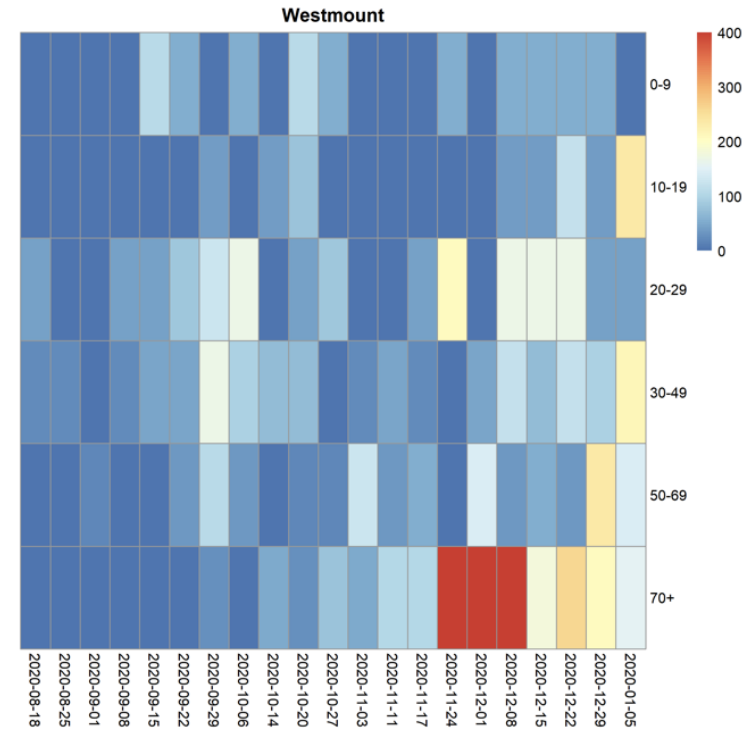Here it is - a very interesting and compelling analysis of the incidence data by age groups in Montreal by @profSBVA, @olivierdrouin, Yacine Boujija and John Sandberg and @CovidEcoles. https://twitter.com/profSBVA/status/1349059044967911432
It confirms infection incidence increased among younger age groups before it did in older populations - the phenomena that triggered all the 'casedemic' arguments we heard in late summer and early fall - which we now know were unfounded, as our hospitals face dark times ahead.
Importantly, it shows how much more dramatic the effect of unsafe school opening is in poorer neighbourhoods. In the lower income areas with large kid populations, the role of kids in driving the pandemic is crystal clear.
In the Centre-Sud (lower income, but not as many households with children), the picture is less poignant.
Whereas in the higher income area (Ouest), even though the proportion of households with children is as high as in the Nord and Est.
Within the areas where more than 30% of HH have children under 19, incidence increased first among kids 10-19 consistently, especially in lower income areas:
And not as much in Westmount and Pointe-Claire, in which although more than 30% of the HH have children under 19, are also two of the highest income areas in the city (median HH income above 100K/year).
The incidence curves by age over time shows that the increase in incidence since schools reopened sustained increasing incidence among children 0-9 and 10-19, during Sept/Oct, creating a reservoir of cases that led to a dramatic increase starting in mid-November across all ages.
The effect of closing schools is also clear when we look at the incidence curves peaking on the week of Dec 29 and the subsequent sharp decline among children (and less sharp across other age groups) after the holidays.
Finally, I find the very compact area in the beginning of these curves quite compelling. Here we clearly see that as soon as schools opened (August 27th). Incidence among younger children (red line) started increasing consistently and only slowed during the December break.
Also, all other age groups (black arrows) had declines in incidence in Early October to mid-November, except children 0 to 9 and 10 to 19 (red arrows) and those over 70 years of age (orange arrow).
In short: "Looking at the evolution over time of new cases of COVID-19 by age group in Montreal during the fall quarter of 2020, our first observation is that, even at young ages, children do contract VIDOC-19 and account for a significant portion of the confirmed cases."
"Second, our descriptive analysis shows that the incidence of COVID-19 among children aged 10-19 years did not follow, but rather preceded, the increase in adult cases. aged 30-49 years old. "
"As a result of this trend, at the beginning of January 2021, adults aged 30-49 and children aged 0-19 represented, respectively, 31% and 21% of the total number of confirmed cases in Montreal. "
"In other words, the transmission of COVID-19 in school-aged children does not appear to be a consequence, but rather an important determinant, of the level of infection in surrounding communities."

 Read on Twitter
Read on Twitter
















